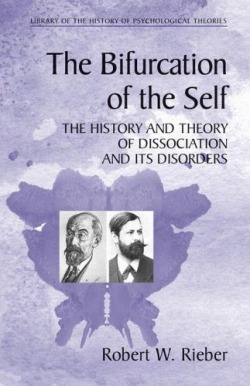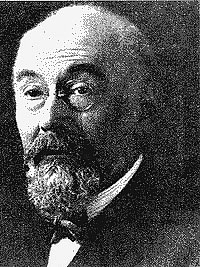The first case of Dissociative Identity Disorder was described by physician Samul Mitchel in 1816 (Rieber, 2002). Interest in Dissociative Identity Disorder died down for a while but became popular again when hypnosis began to gain popularity in the 1900's. DID did not become an official disorder in the Diagnostic and Statistic Manual of Mental Disorders (DSM) until 1980 (Casey, 2001). It was incorporated into the DSM-III under the name Multiple Personality Disorder but was changed to Dissociative Identity Disorder in the DSM-IV. The definition of Dissociative Identity Disorder has also changed over the years. The previous definition stated "at least two of these identities or personalities recurrently take full control of the person's behavior" (Casey, 2001, p. 7). The definition no longer includes the word full and makes the definition much more broad.
Early Cases

There are several cases that laid the foundation for Dissociative Identity Disorder. The first ever case was that of Mary Reynolds in 1811 and was documented by Samuel Mitchel. Samuel Mitchel also documented the case of Rachel Baker. Her main symptom was that she would preach in her sleep as well as write poetry and music. A final early case that played an important role in the development of DID is that of Ansel Bourne, which was documented by Richard Hodgson in 1891-92. Bourne was a 61 year old man who went missing for several months from New York and ended up in Norristown, Pennsylvania with no recollection of how he got there (Rieber, 2002). These are just three of many early documented cases that played a very important role in Dissociative Identity Disorder.
Theorists

There are three major theorists in the field of Dissociative Identity Disorder. The first and the most important theorist was the man by the name of Pierre Janet. One of the major developments of Janet was his ideas about hypnosis and the unconscious. Janet argued that hypnosis was actually a different type of divided conscious instead of someone being unconscious under hypnosis. He said this different state of consciousness was always there but would sometimes appear to be "different personalities." His work is what the dissociation theory is based off of. The second important theorist is Morton Prince. Prince tried to relate the psychological and physiological aspect of MPD and hysteria. Prince was a fan and supporter of Janet and aimed to strengthen his theory. His theory dealt with different levels thought processes that he believed people had. Prince believed that his theory was promising because it explained why information could be recorded but not perceived in the conscious state but can be perceived in the other subconscious state. The final important theorist in the field of Dissociative Identity Disorder is Boris Sidis. The main theory that Sidis provided was his psychology of suggestion. His approach took a more biological approach and looked at how neurons work into the idea of consciousness (Rieber, 2002).
Advancements
There are some major differences between the past history of Dissociative Identity Disorder and how it is known in the psychology world today. One of these advancements is the way in which DID is defined and diagnosed. It was defined by early clinicians by the distinct different switching of behavior patterns and states. It is now classified more by self-reported measures and interviews conducted by a professional in the field. The role that trauma plays in DID used to be overlooked by professionals but is now more studied and considered in Dissociative Identity Disorder. Another advancement deals with the number of alters that have been identified in people with Dissociative Identity Disorder.
